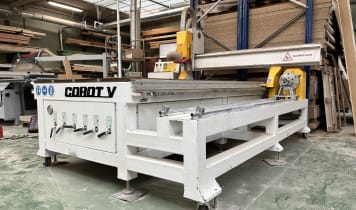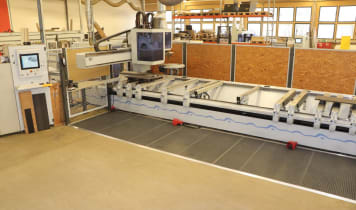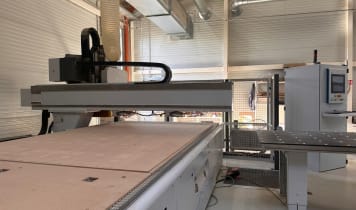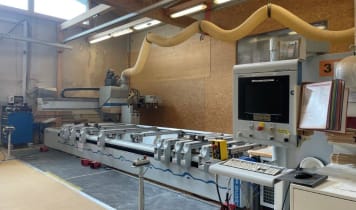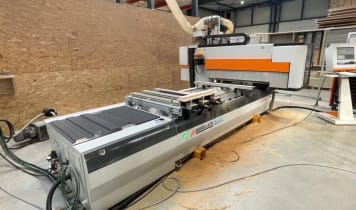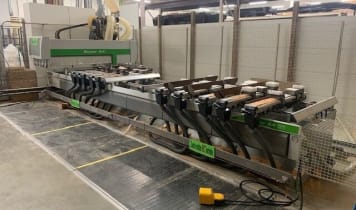The area of “CNC woodworking machinery” encompasses all machinery featuring computerised numerical controls (CNC). Due to the extensive range of processing options, they are also called CNC wood processing centres. Since no hard-wired numerical controls have been offered since the beginning of the 1980s, the distinction between NC and CNC technology is only of historical interest and the terms are generally used synonymously.
Woodworking CNC machines are characterised by customisable programming options for movement procedures, which can be repeated and adapted as many times as needed by saving and changing the NC programmes. DIN 66025/ISO 6983 define a cross-system, manufacturer-independent interface for programming, which is supported by every woodworking CNC machine. More complex CNC machines for wood also feature additional or alternative programme interfaces, which make it easy to programme complicated movement processes.
- Machinery with computerised numerical control
- All movement procedures can be programmed individually
- Can be used in all stationary tool machines
Quality Great offers Personalized
An additional interface automatically translates the programme entered by the operator into DIN code. This alternative interface, however, operates fully independently of this standard. Workpiece programming in a CNC machine for woodworking sets the control information for the production of a workpiece in a fixed form in a data memory device. In offline programming, the programme data is created as part of work preparation and is transferred to the machine via cables or on external data storage devices. In online/workshop programme, the programme is entered directly into the CNC technology. Workpiece programmes can be created using special manufacturing programming languages, such as APT and EXAPT, based on CAD data or construction drawings. Data-exchanging formats such as IGES are available for directly adopting data from CAD systems. The source text of the workpiece programmes is transposed into ‘cutter location data’ via the CLDATA interface, which contain datasets for positioning the workpiece to be used by the NC machine. These data sets can be translated into DIN code or are interpreted by the NC machine in real-time. Graphic environments allow NC programming at a very high abstraction level in workshop programming. It is also possible to directly control NC machines using an external control computer via a DNC interface (direct numerical control).


